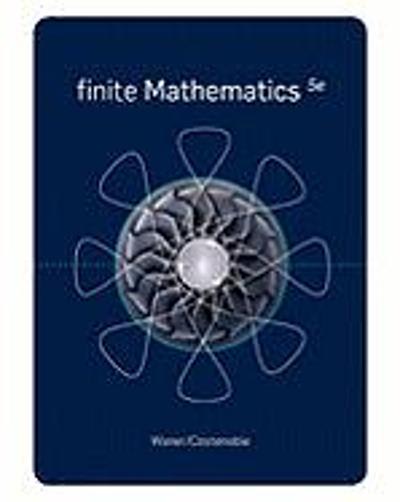Question
Suppose that, in the past, 25% of students in a certain school district have qualified for free lunches.A school administrator believes that this proportion has
Suppose that, in the past, 25% of students in a certain school district have qualified for free lunches.A school administrator believes that this proportion has changed.
The hypotheses are:H0:p=0.25,H 1 :p0.25
1.Suppose that sample datado notprovide sufficient evidence for you toconclude that the proportion of students who qualify for free lunches has changed from 25%.Later, an analysis of the entire student population indicates that, in reality, 27.5% of all students qualify for free lunches.Was your original decision a Correct Decision, a Type I error, or a Type II error?
2.What type of error was made when the decision based on sample data was to reject the null and conclude that the proportionof students who qualify for free lunches is different from 25% when, in fact, that proportion is still 25%?
Group of answer choices
3.A can of soda is labeled as containing 12 fluid ounces. The quality control manager wants to verify that the filling machine is neither over-filling or under-filling the cans.
The hypotheses are:H
0
=12,H1
12
H0=12,H112
A sample leads the manager to reject the null hypothesis. Suppose, in fact, the machine is not out of calibration.
Is this a Correct Decision, a Type I error, or a Type II error?
4.The mean consumption of popcorn annually for Americans is 54 quarts. The marketing division of popcorn.org unleashes an aggressive campaign designed to get Americans to consume even more popcorn. A sample provides enough evidence to conclude that the marketing campaign was effective.
The hypotheses are:H
0
=54,H
1
>54
H0=54,H1>54
Suppose the mean annual consumption of popcorn is actually 53.4 quarts.
Was this a Correct Decision, a Type I error, or a Type II error?
5.According to the CDC, 2.8% of high school students currently use electronic cigarettes. A high school counselor is concerned that the use of e-cigs at her school is higher.A sample provides enough evidence to conclude that the null hypothesis should not be rejected.
The hypotheses are:H
0
p=.028,H
1
p>.028
H0p=.028,H1p>.028
Suppose the proportion of students at her high school is actually 3.4%.
Was this a Correct Decision, a Type I error, or a Type II error?
6.According to the CDC, 15.2% of American adults experience migraine headaches. A massage therapist feels that she has a technique that can reduce the frequency and intensity of migraine headaches.A sample provides enough evidence to conclude that the null hypothesis should be rejected.
The hypotheses are:H
0
p=.152,H
1
p<.152
H0p=.152,H1p<.152
Suppose, in fact, the percentage of patients in the therapists program who experience migraines is actually 15.3%.
Was this a Correct Decision, a Type I error, or a Type II error?
Step by Step Solution
There are 3 Steps involved in it
Step: 1

Get Instant Access to Expert-Tailored Solutions
See step-by-step solutions with expert insights and AI powered tools for academic success
Step: 2

Step: 3

Ace Your Homework with AI
Get the answers you need in no time with our AI-driven, step-by-step assistance
Get Started


